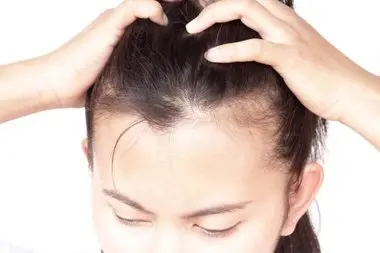Overview
Many people believe that one's hair reflects their identity and sense of style. People can express themselves in a variety of ways using modern hairstyling techniques, whether it's through abundant curls, smooth straightening, or brilliant colors. However, there may be a price for using heat tools, chemical dyes, and styling chemicals frequently. Hair loss is one of the main issues related to frequent hair treatments. While dyeing or styling hair once in a while might not be bad, doing so frequently can weaken hair strands and damage hair follicles, which can eventually cause thinning and shedding.
The Link Between Hair Loss and Styling
When hair falls out of the scalp or other areas of the body, it is referred to as hair loss. Frequent styling and coloring are important contributors to this problem, especially in those who already have weak or thin hair, even if there are many other variables as well, including as heredity, hormone imbalances, and medical disorders. Hair is more vulnerable to breakage and root damage when it is exposed to extreme heat, harsh chemicals, or tight hairstyles.
The Effects of Chemical Coloring on Hair Health
Chemicals like hydrogen peroxide and ammonia are used in hair dyeing to change the natural color of the hair shaft. Even while this procedure can yield beautiful results, frequent exposure depletes the hair of its natural proteins and oils, leaving it fragile, dry, and brittle. The weakening of the hair shaft over time causes breaking and split ends, which can be mistaken for hair loss. Damage to the scalp and hair follicles, which may impair hair regrowth, are more serious outcomes.
Heat Styling: A Quiet Assailant
For many people, blow dryers, curling irons, and flat irons are necessary equipment for their cosmetic regimens. On the other hand, hair strands may sustain severe structural damage from prolonged exposure to high temperatures. Heat causes keratin, a crucial protein, to break down, dehydrate hair, and weaken hair strands that are more prone to breaking. This type of mechanical stress results in breakage-induced thinning, which creates the appearance of reduced hair volume, rather than hair loss from the roots.
Traction alopecia and tight hairstyles
Though they may seem stylish, hairstyles like buns, braids, and ponytails can cause traction alopecia if they are worn too often and too firmly. Pulling hair off the scalp repeatedly damages the hair follicles over time, resulting in this form of hair loss. At first, the effects can be reversed, but if the follicles are under constant stress, irreversible hair loss may result.
Warning Symptoms of Hair Loss Caused by Styling
It's critical to monitor the condition of your hair closely. Excessive shedding, obvious thinning, increased hair breakage, dryness, and a change in hair texture are all early indicators of damage. Ignoring these symptoms could worsen the damage and make it more difficult to repair.
Hair Care Advice and Preventive Steps
Minimize Chemical Treatments: Steer clear of regular hair dyeing. If at all feasible, use organic or ammonia-free dyes, and wait at least 6 to 8 weeks between sessions.
Use Heat Wisely: Always apply a heat protectant spray before to style, and try to use as few heat tools as possible.
Gentle Hairstyles: Steer clear of tight hairdos that strain the scalp. To avoid stress, go for looser styles.
Deep Conditioning: To replenish lost moisture and strength, regularly treat your hair with deep conditioning treatments or hair masks.
Scalp Care: Maintain a healthy and clean scalp. Steer clear of product buildup and use gentle shampoos. In addition to promoting hair development, scalp massage can increase blood flow.
In conclusion
Overdoing coloring and styling can cause long-term damage, including hair loss, even if it can improve your appearance and confidence. You can have the best of both worlds—beautiful and healthy hair—by being aware of the risks and implementing a balanced hair care regimen. You can reduce the negative effects of regular style and preserve your hair's natural strength and luster for many years to come by providing your locks with the rest and care they require.






